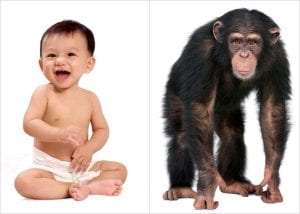In the past, over 70 years ago, scientists relied on fossils to understand the history of life on earth. It wasn’t until the revolutionary discovery of DNA that we now have a better understanding of evolution, and Darwins theory was proven to be correct.
Charles Darwin was a naturalist, geologist and biologist who analyzed plants and animals, which sparked his curiosity as to how different species change over time. He is well known for his theory on evolution and insights on natural selection.
How did the discovery of DNA prove that Darwin’s theory of evolution was correct?
According to Darwin’s theory of evolution, species evolve through time by a process of natural selection where organisms with favourable traits have a higher chance of surviving and reproducing. DNA, which was discovered in the 1950s, demonstrated that genes were in charge of these characteristics and that DNA mutations could produce new characteristics and variations within a species.
Since then, the study of DNA has shown proof of the evolutionary connections between various species, for example, by comparing DNA sequences. It has also made it possible to comprehend the processes of evolution, including genetic drift and gene flow, better. Genetic drift refers to the random fluctuations in the frequency of alleles in a population, caused by chance events such as random mating, natural disasters, or the movement of individuals into or out of a population. The term “gene flow,” on the other hand, describes the movement of genetic variation from one population to another, frequently as a result of interpopulational migration or breeding. Both of these things have the potential to significantly alter population genetics over time and to help make species more diverse.
The video demonstrates how the discovery of DNA and the capacity to compare DNA sequences have made it possible for researchers to investigate the evolutionary connections between various species. To determine how closely related two species are to one another, scientists can, for instance, compare the DNA sequences of humans and chimpanzees. The discovery of DNA validated Darwin’s theory by demonstrating that things evolve exactly as he anticipated since DNA holds a great deal of information about the genesis of all organisms.


How does it change the way we view evolution today and into the future?
The discovery of DNA has changed the way we view evolution by providing a better understanding of the mechanisms behind it. For instance, in addition to natural selection, genetic drift and gene flow are increasingly recognised as significant evolutionary mechanisms. Furthermore, the study of DNA has improved our understanding of how features are inherited genetically and transmitted down through the generations.
Evolution is more complicated today than it was then, and there are undoubtedly more ideas and details associated with it. However, because of this complexity, scientists have made many discoveries and have learned more about both DNA and evolution. Because Darwin’s theory made it easier for James Watson and Francis Crick to find DNA, it is likely that it would have taken longer to discover DNA without his theory. Without Darwin, we would not know as much as we know today and would not have all of this information.
Because they show the significance that genetic variety can have in a species’ ability to adapt to various habitats, the birds from the Galapagos Islands are a good illustration of how DNA is vital to evolution. The video describes how Darwin noticed that the finches on different Galapagos islands had various beak shapes that were adapted to various kinds of food. Later, researchers who were examining the finches found that the different beak shapes were actually caused by changes in certain genes that were in charge of regulating the beak’s growth. This demonstrated how alterations in DNA can affect physical features, and how such alterations may be advantageous in certain contexts.

